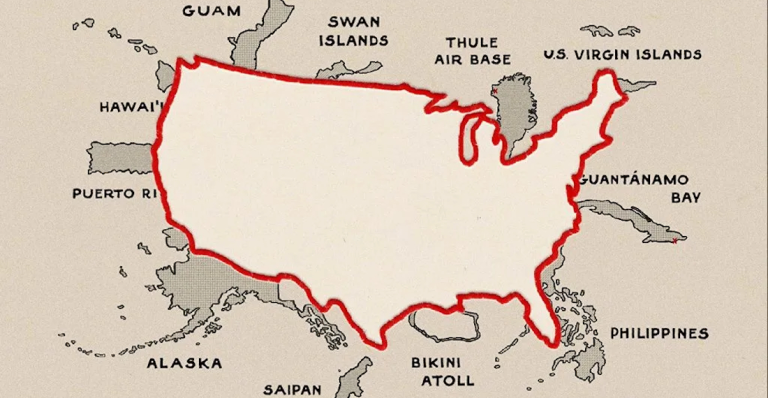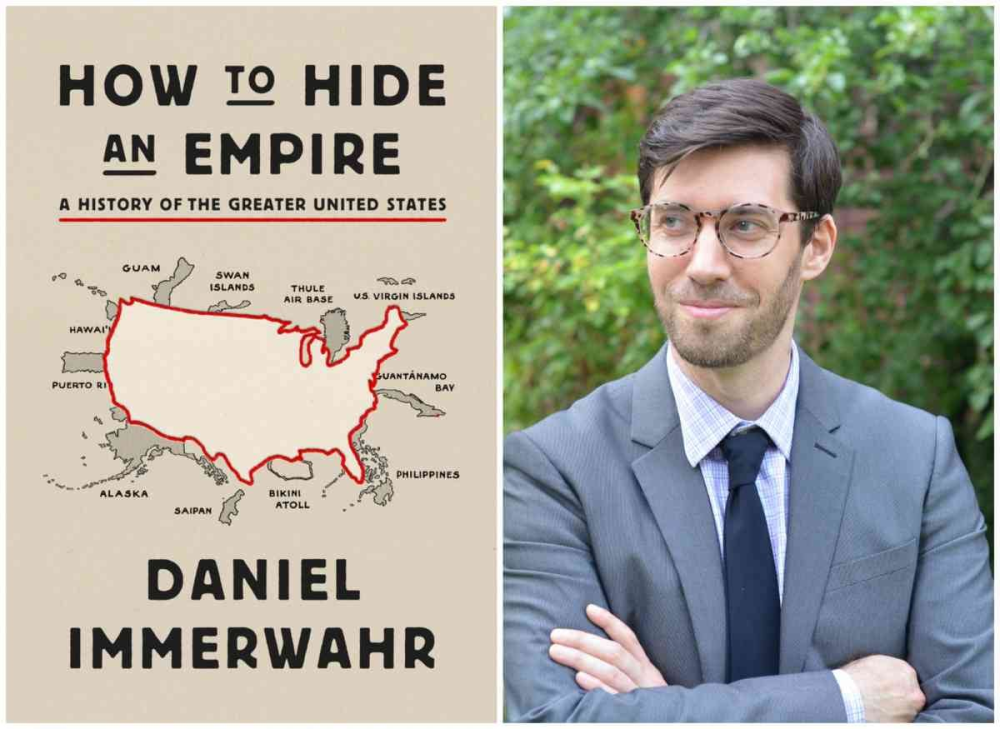
A New Book Reveals the Overlooked History of U.S. Territories and Military Bases Worldwide
New York, N.Y. — When most people think of the United States, they picture the 50 states stretching from California to Maine.
But a new book, How to Hide an Empire: A History of the Greater United States, challenges that narrow view, exposing the vast and often ignored territories, colonies, and military installations that have shaped the nation’s global influence. Author Daniel Immerwahr, an associate professor of history at Northwestern University, argues that the U.S. is not just a country—it’s an empire.
“At various times, the inhabitants of the U.S. Empire have been shot, shelled, starved, interned, dispossessed, tortured, and experimented on,” Immerwahr writes. “What they haven’t been, by and large, is seen.”
From Puerto Rico to Guam, from the Philippines to hundreds of overseas military bases, the U.S. has long exerted control far beyond its mainland borders. Yet this history remains largely absent from textbooks and public discourse. Immerwahr’s book seeks to change that.
The Forgotten Territories

The U.S. has long downplayed its imperial reach, but the numbers tell a different story.
At its peak, the country controlled territories spanning 11 million people—more than the populations of Sweden and Portugal combined.
Puerto Rico, acquired in 1898 after the Spanish-American War, remains a U.S. territory today, its residents U.S. citizens without full voting representation in Congress.
Guam, American Samoa, and the U.S. Virgin Islands share similar colonial legacies.
Immerwahr highlights how these territories were often treated as second-class possessions.
In the early 20th century, Puerto Ricans were subjected to forced sterilization campaigns, while Filipinos fighting for independence were met with brutal military suppression.
“The U.S. has a long history of claiming to spread democracy while denying self-rule to the people under its control,” Immerwahr notes.
The Military Empire
Beyond formal territories, the U.S. maintains a sprawling network of military bases—approximately 800 installations in over 70 countries. These bases, often built after wars or through unequal treaties, serve as strategic footholds for American power.
Immerwahr points to Okinawa, where residents have protested for decades against the heavy U.S. military presence, and Diego Garcia, an island whose entire population was forcibly removed to make way for a U.S. naval base.
“The U.S. prefers to think of itself as a republic, not an empire,” Immerwahr says. “But empires don’t always look like Rome or Britain. Sometimes, they’re hidden in plain sight.”
Resistance and Recognition
Despite systemic erasure, people in U.S. territories have fought for visibility and rights. In Puerto Rico, movements for statehood and independence have gained momentum, especially after Hurricane Maria exposed the island’s neglected infrastructure. In Guam, activists push for decolonization, challenging the U.S. to reckon with its colonial past.
Immerwahr’s book arrives at a critical moment, as debates over Puerto Rican statehood and military expansion continue. “If we don’t acknowledge this history,” he warns, “we’ll keep repeating the same mistakes.”
Why This History Matters
Understanding the Greater United States isn’t just about filling gaps in the historical record—it’s about confronting the realities of American power. From Hawaii’s annexation to the Philippine-American War, the U.S. has often expanded through coercion rather than consent. Recognizing this legacy, Immerwahr argues, is essential for a more honest national narrative.
“Empires don’t vanish just because we stop talking about them,” he says. “They linger in laws, in borders, and in the lives of people who’ve been left out of the story.”
How to Hide an Empire is more than a history book—it’s a call to see the United States as it truly is: a nation built on both ideals and imperialism.